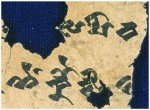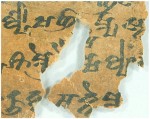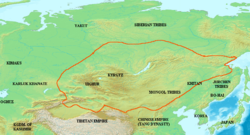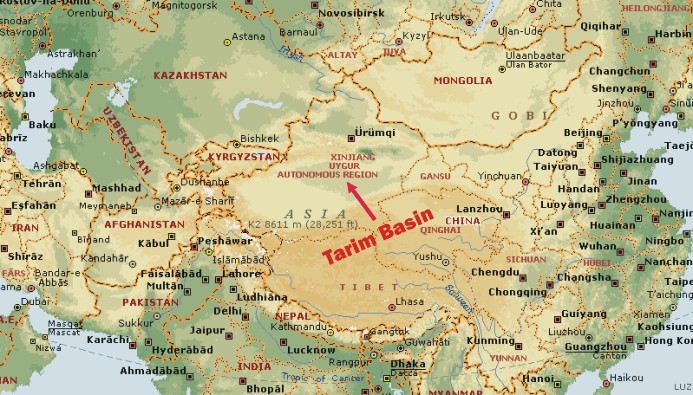|
Languages of the World KENAX Translation Agency | |
 |
| TRANSLATION RESOURCES | TRANSLATION TIPS | TRANSLATION JOBS | TRANSLATION SERVICE |
Language of Tocharian, Jobs and EmploymentThis webpage was created to help people speaking Tocharian find work. Below are some weblinks to help you find work in your local area. If you know of any others, please feel free to suggest them to us so that we can add them to these pages. |
|
Otherwise, you can also work remotely from the comfort of your home by providing translations or other remote human resource work. If you would be interested in working from the comfort of your home, please fill in our quick application form to the right. | 
| |
Tocharian Web Links Related to Jobs, Employment, Translations and Other
Language family: Indo-European > Tocharian - now extinct Tocharian, or Tokharian, is one of the most obscure branches of the Indo-European languages and was only discovered by chance in archaeological expeditions to Chinese Turkestan in the early 20th century, when discoveries of amazing art treasures and ancient culture along the old silk road sparked great international interest in the area. Based on Old Turkic manuscripts which referred to these speakers as the "Twghry," they were labelled as the Tocharoi, a tribe mentioned in classical Greek writings as having lived in Bactria (eastern Iran and Afghanistan) during the second century after Christ. |
 
|
In fact, the discovery of the language has ruffled a few linguistic feathers because it has thrown a wrench into many neat theories concerning the development of Indo-European languages. It seems that some group of people within Europe splintered off and migrated east, developing sounds and characteristics in their language which disrupt many of the long standing academic theories about the language family. Phonetically, Tocharian is a "centum" Indo-European language generally associated with western languages such as Italic, Celtic, Germanic, and Greek, making it a unique splinter among the East European and Asian populations. It is now generally believed that this splinter group began a very early migration around 2000BC, but because few records were found (what was preserved was thanks mostly to the extremely arid climate of the Tarim Basin), this is open to conjecture. One theory postulates that the original home of the Proto-Tocharians was somewhere on the steppes of southern Russia, hence bordered on the west and south by the Thraco-Phrygians, the Armenians and the Greeks; on the west and north by the Germans and the Balto-Slavs, in close proximity to the Finno-Ugrians on the east and north. Left: discovery of ancient Tocharic script. | |
|
This Finno-Ugrian relation has kindled interest among Hungarian scholars in search of romantic roots to their own past, but who have so far failed to unearth anything concrete. An alternative analysis by a Slavic linguist, who cites phonological, morphological, and lexical similarities between Tocharian and Balto-Slavic, argues that "at some very remote time, the ancestors of the Germanic tribes, the Balto-Slavs, and the Tocharians formed a Northern Indo-European dialect group which split from the common language family at a very early stage and later (probably during the 4th milleium B.C.) dissolved into Germanic-Balto-Slavic and Tocharian." As the Tocharians migrated eastward, their language was influenced (mostly in the form of loan words, above all concerning religious terminology) by Iranian and Sanskrit due to missionaries from Iran and India who brought Buddhism to the Tocharians. In fact, it is generally believed that the Tocharians were highly instrumental in spreading the Buddhist faith eastwards and to the later migrating Turkic population. Before it became extinct in 840 AD, it used to consist of two languages (dubbed 'A' and 'B' but which were not intercomprehensible) spoken during the 6th to 9th centuries in what is now referred to as Xinjiang Autonomous Region of China. Concerning the two languages, academics concluded that dialect A was a purely liturgical language in the monasteries of the east, and had been so preserved for several centuries at least, for a long time ceasing to be a language of the ordinary citizen due to Turkic immigration into the area. On the other hand, Tocharian B was clearly the vernacular of a comparatively rich and flourishing culture (to the west and better protected by the mountains and the desert from the influence of the Turks). It is very likely that B was also the language of everyday monastery life in the east, existing side by side with the liturgical form of A. The two Tocharian dialects have gone through a long period of independent development, anywhere from five hundred to a thousand years, until they became mutually unintelligible.
This area where the splinter group decided to settle, the Tarim Basin in what is now northwest China |
|
The Uyghurs themselves were a great empire, probably benefiting from the prosperity of the silk road. Their story is of an obscure nomadic tribe from the Altai mountains who stood up against the Chinese to eventually become diplomats of the Mongol invasion. At the peak of their empire they covered a great expanse encompassing what is now a large part of Kazakhstan, Russia, China, and all of Mongolia.
Right: The expanse of the Uyghur empire at its peak. |

| |
|
The modern Uyghur population now found in the Tarim Basin are said to be descendants of the nomadic Turkic tribes (the Turks ruling the area for a thousand years), the Tocharians who lived there, and those Uyghurs who left Mongolia (the combination of which would explain why one can now find Uyghurs of light-coloured skin and hair). Over the years the region was swamped by various wars and tidal changes of power between east (from a lengthy Manchu domination) and west; between Buddhist and Islam forces. At present the Uyghurs are under control of the Chinese in an area called Xinjiang Autonomous Region of China. Xinjiang means "New Dominion" in Chinese and is offensive to the local population, who would rather their area be called Chinese Turkestan, East Turkestan (with Turkestan sometimes spelled as Turkistan), or Uyghurstan. Since 9/11 the Chinese have used the "war on terror" as a pretext to further repress any greater separatist notions of the local population, although they have respected their Islamic roots and not subjected them to the Chinese one child per family policy, since Islamic culture generally expects larger families.
Like this content? Please support it by pressing any or all of these links below: Copyright © KENAX, by Karel Kosman - All Rights Reserved Worldwide. |
| KENAX Translation Agency | |

